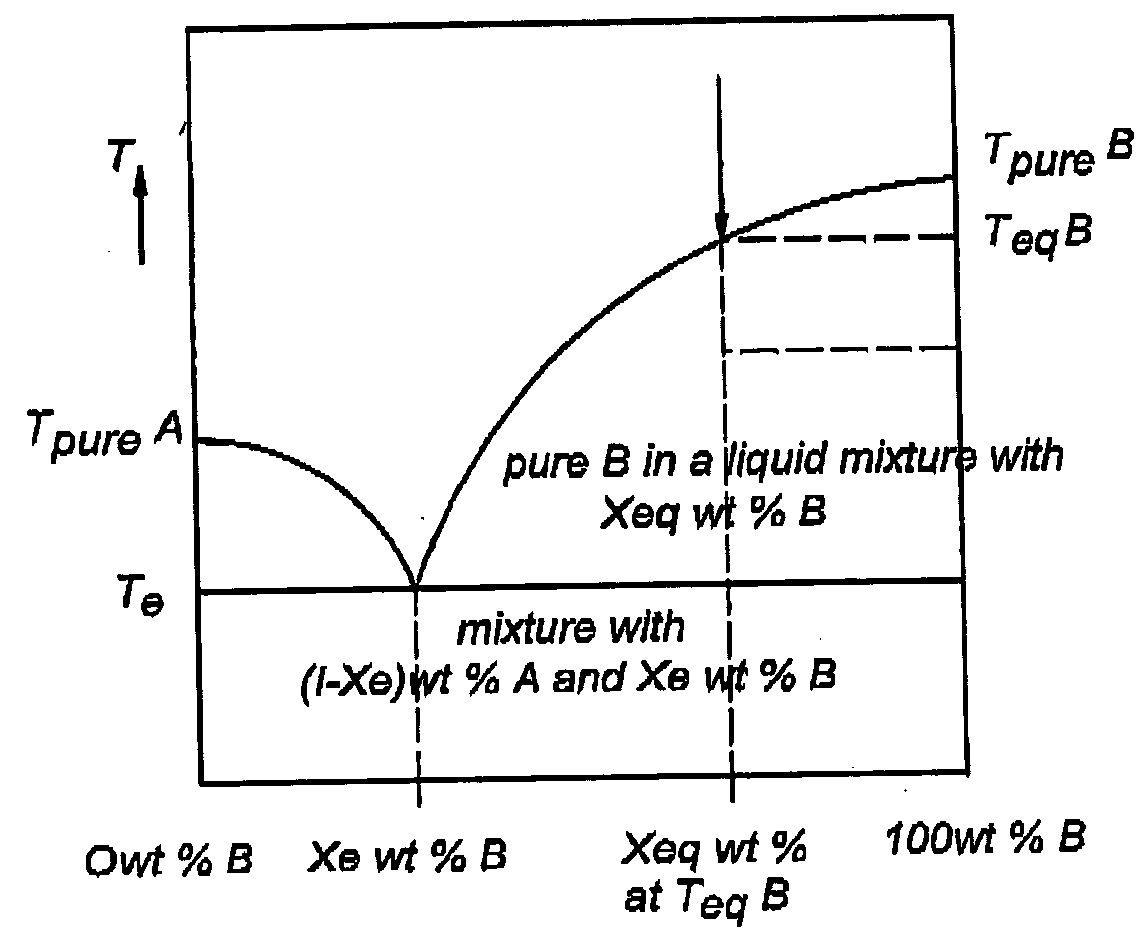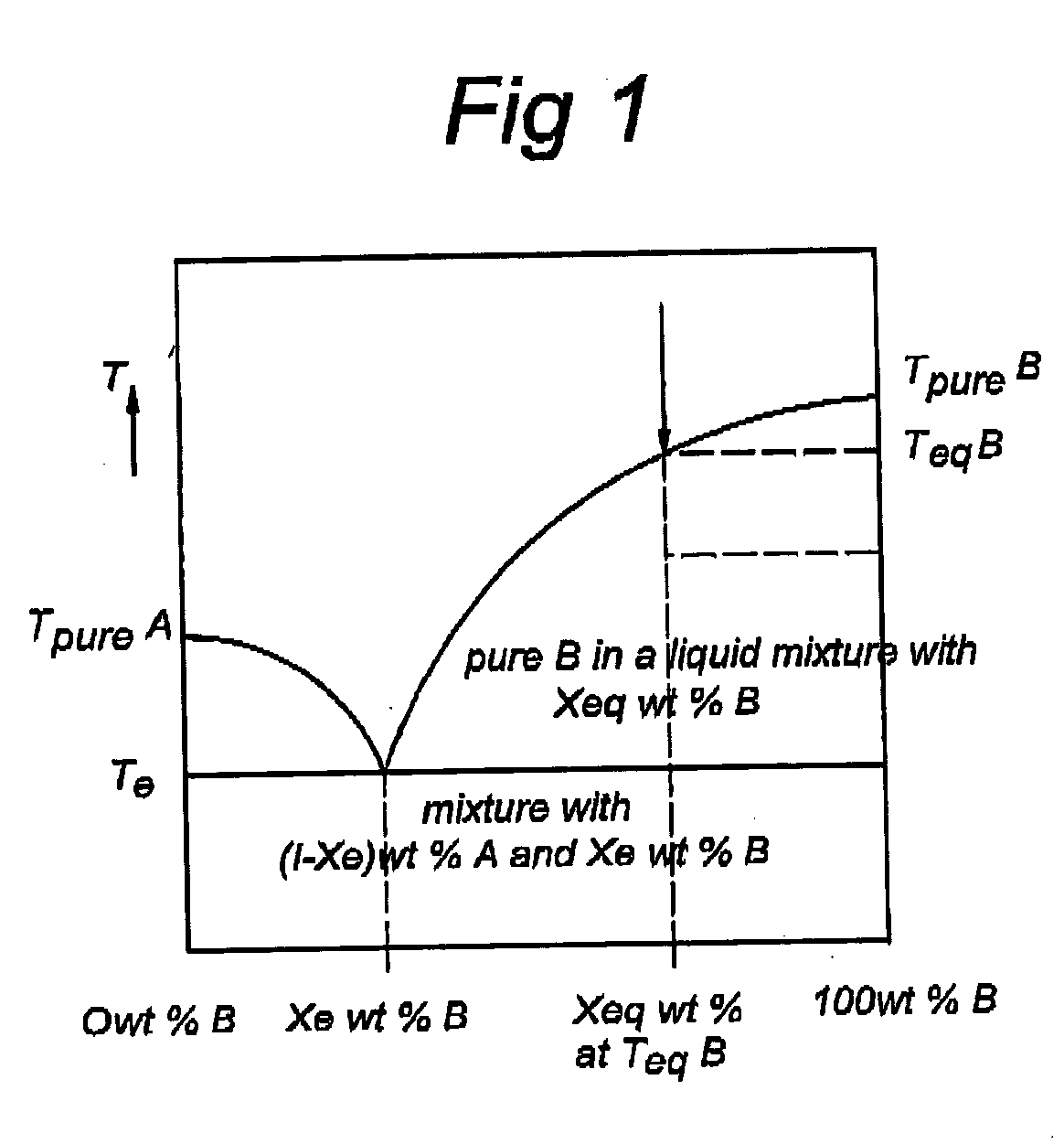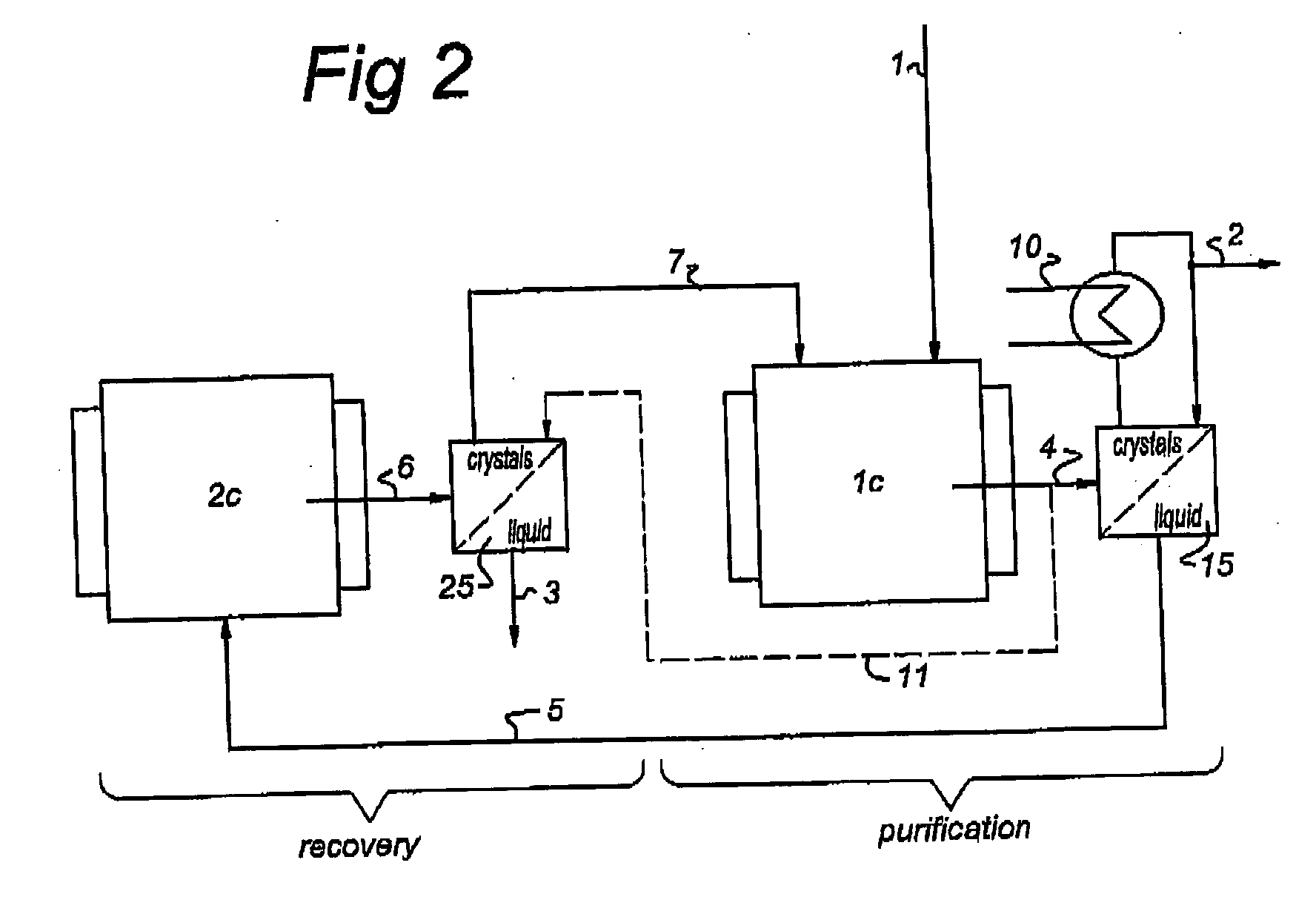Method and apparatus for recovering a pure substance from an impure solution by crystallization
a technology of pure substance and crystallization, which is applied in the direction of crystallization plant arrangement, solvent extraction, separation process, etc., to achieve the effect of reducing the number and complexity of required components, high capital cost, and complicated equipmen
- Summary
- Abstract
- Description
- Claims
- Application Information
AI Technical Summary
Benefits of technology
Problems solved by technology
Method used
Image
Examples
example 1
[0024] Based on the application of para-xylene as described Example 3 in U.S. Pat. No. 4,787,985 using a feed of 80 wt % para-xylene, a waste stream with a liquid residue concentration of 9.5 wt % para-xylene. Assuming equal crystal production capacity of 900 kg / h in each of four stages the following calculation can be made:
PX concentrationEquilibriumTemperatureStage(wt % PX)Temperature (° C.)change per stageI9.5 wt %−64° C.47II 44 wt %−17° C.12III 62 wt % ˜5° C. 5IV 72 wt % 0° C. 7 (wc)
[0025] This can be compared using the same basis and equal crystal production in each stage with the present process as illustrated in FIG. 2.
PX concentrationEquilibriumTemperatureStep(wt % PX)Temperature (° C.)change per stage1 60 wt % −6° C.19 (wc)29.5 wt %−64° C.58
[0026] The temperature change between stages is due to the difference in impurity concentration. The effect of the second wash column between step 2 and step 1 can have a significant influence on the change in concentration. This c...
example 2
[0027] Based on the application of para-dichlorobenzene and using a feed of 95 wt % para-dichlorobenzene, a waste steam with a liquid residue concentration of 30 wt % para-dichlorobenzene. Assuming equal crystal production capacity of 500 kg / h in each of four stages the following calculation can be made for the four-stage process:
pDCB concentrationEquilibriumTemperatureStage(wt %)Temperature (° C.)change per stageI30 wt % −1° C.23II52 wt % 22° C.12III67 wt % 34° C.14IV77 wt % 40° C.13 (wc)
[0028] This can be compared using the same basis and producing 75% of the crystals in the first step and the remaining 25% crystal production in second step with the present process as illustrated in FIG. 2.
pDCB concentrationEquilibriumTemperatureStep(wt %)Temperature (° C.)change per stage177 wt % 40° C.13 (wc)230 wt % −1° C.41
[0029] This example illustrates the power of this two-step process in that the concentration of the product fed to the first separator is equal to that of the four-s...
example 3
[0030] Using the same conditions as in example 2, the crystal production is shifted where larger portion (90% of the total product) is crystallized in the first step. The temperature of the slurry from the first step is colder than before and therefore the temperature across the wash column is also higher. Controlling the ratio of crystal production between the two stages makes it possible to optimize the wash column performance.
PUM
| Property | Measurement | Unit |
|---|---|---|
| Temperature | aaaaa | aaaaa |
| Temperature | aaaaa | aaaaa |
| Temperature | aaaaa | aaaaa |
Abstract
Description
Claims
Application Information
 Login to View More
Login to View More - R&D
- Intellectual Property
- Life Sciences
- Materials
- Tech Scout
- Unparalleled Data Quality
- Higher Quality Content
- 60% Fewer Hallucinations
Browse by: Latest US Patents, China's latest patents, Technical Efficacy Thesaurus, Application Domain, Technology Topic, Popular Technical Reports.
© 2025 PatSnap. All rights reserved.Legal|Privacy policy|Modern Slavery Act Transparency Statement|Sitemap|About US| Contact US: help@patsnap.com



